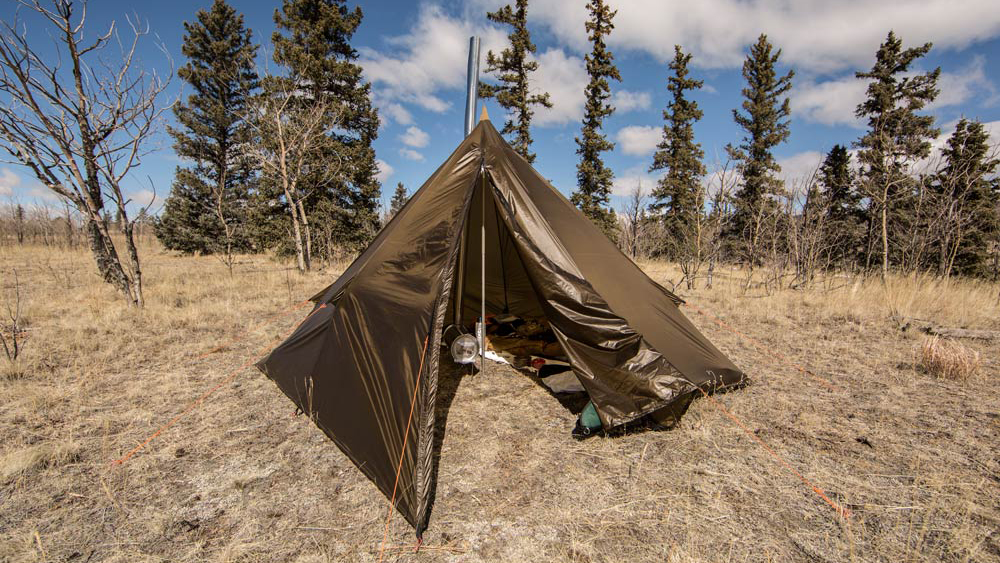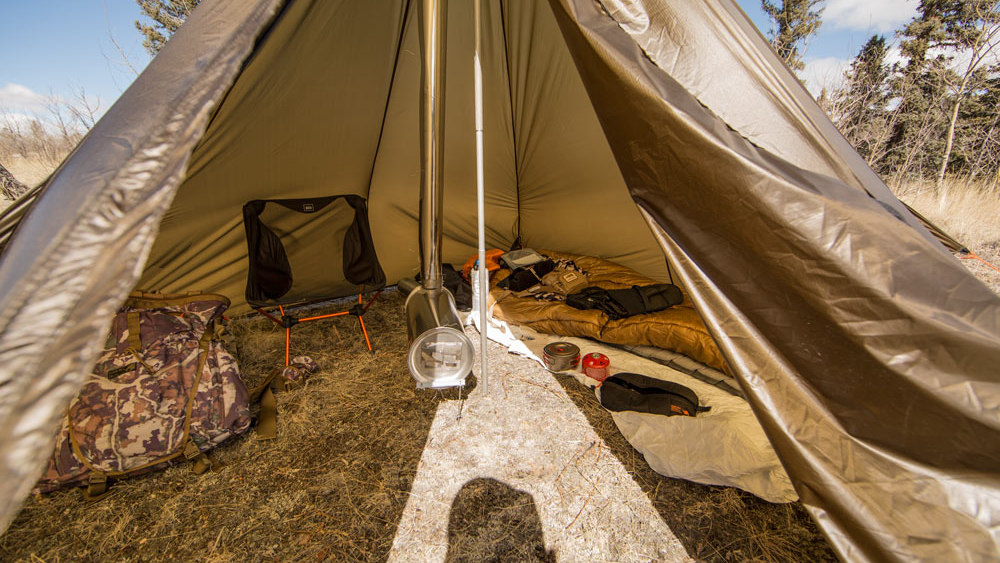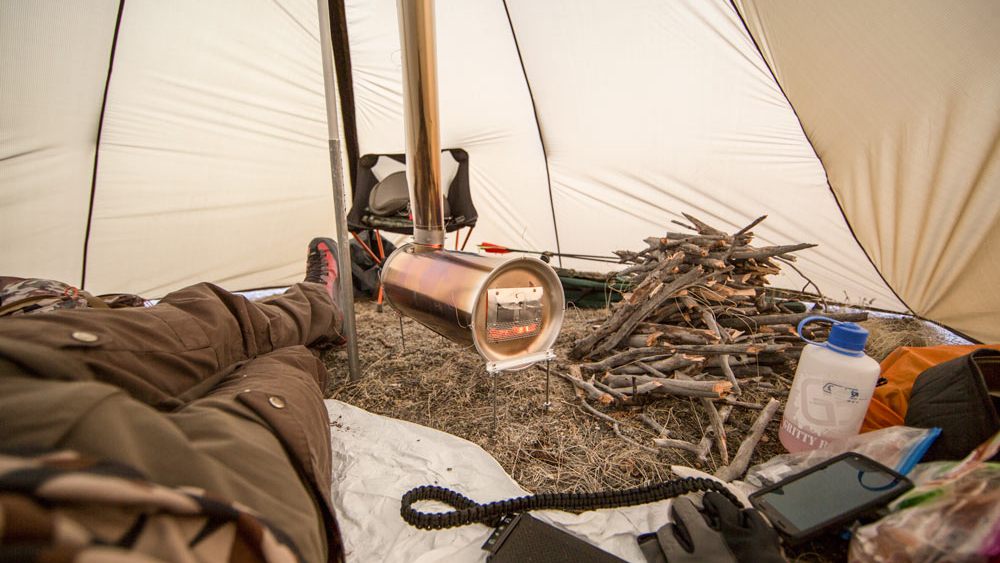Man isn’t meant to stay indoors — our weekly “Trekking” column can attest to that. It’s a column dedicated to the adventurer inside of all of us, the one pining to ditch the office humdrum for a quick surf session or seven-week jaunt in the Grand Tetons. One day we may highlight an ultra-light stove and the next a set of handmade canoe paddles. Life doesn’t just happen inside the workplace.
There once was a time when tipis, not tents, were the mainstay of nomadic people. The indigenous people of the Great Plains and Canadian Prairies traditionally utilized wooden poles draped with painted animal hides, such as buffalo, to supply themselves with shelter from the elements. Times have changed, however, and people no longer rely on the classic structure like they once did, especially given the lucrative weight of modern offerings. That said, Kifaru International’s Tut 4 Man ($650) isn’t like most when you consider the tipi’s lightweight design and ample head room.
Kifaru International has built a name for itself since it first arrived on the scene in ’79, quickly separating itself from other outdoor manufacturers with a smorgasbord of American-made equipment that spans basic hunting packs to industrious sleds. The apt-titled Tut 4 Man is one of the latest in the company’s limited tipi selection, one designed to grant you and one other more than six feet of headroom when erected. The minimal footprint spans 8.3 x 8.3 feet when fully assembled, and, moreover, packs down to a mere 6.5 x 22 inches when you need to take it on the go. It weighs just under 4 pounds, too, which includes the pole, pegs, a seam sealer, and the accompanying tote.
Hardware specs aside, the tipi’s fundamental design also aids with the elements. The steeped walls help it better shed wind and water outside, while the small vent at the top allows you to cook with a small, internal stove (sorry, no open flames). And while it may not be easy on your eyes — or your wallet — it’s built to last. You can’t ask for more.
Check out Kifaru International online to pick up the Tut 4 Man, or to browse the company’s selection of tactical gear, sleep systems, and outdoor equipment.







